If you’re selling a house in Minneapolis, get some vacuum breakers. When you have a place for a garden hose to connect to the municipal water supply, you need some type of backflow prevention, and that’s what these devices are for. This is one of the required repair items for the Minneapolis Truth-in-Housing evaluation, which is a required inspection for anyone listing a home for sale in Minneapolis.
So why do I need this thing? A vacuum breaker, commonly referred to as a backflow preventer, is a device that prevents the potable water in your home, and possibly your neighborhood, from getting contaminated. It’s basically a one-way valve.
How could your water get contaminated? Picture this scenario: I want to mix up some vegetation killer, so I buy the concentrated stuff, pour it into a garden sprayer, then put my garden hose in the bucket to fill it. I turn the water on, but I get sidetracked with a plumbing project. I shut off the water to my house, and then open up the laundry faucet to drain the water out of the pipes. This will create a siphoning effect, which could actually suck the nasty chemicals in the garden sprayer back into my home, contaminating the potable water. An even worse scenario would be the city doing work on the water pipes, and the chemical gets siphoned back into the city’s water supply, contaminating a whole neighborhood.
While these scenarios aren’t likely, it has happened many times throughout the country, and the cost of fixing a contaminated water supply for a city is huge. The cost of a vacuum breaker is very little, about eight dollars. While Minneapolis enforces this plumbing code requirement at the time of sale, this isn’t a special requirement for Minneapolis. Vacuum breakers are still required by national plumbing codes all over the country, and they’re required throughout Minnesota by the Minnesota State Plumbing Code, section 4715.2100 (D).
The two most common places where these are installed are at outside faucets and at laundry sink faucets with garden hose threads. An external vacuum breaker is required at outside faucets if they don’t already have one built in. How do you know the difference? Look for the number “1019” or “1011” somewhere on your faucet. If it has that, you don’t need an external vacuum breaker. Check out the examples below; none of these faucets need an external vacuum breaker.
If you have a laundry faucet without garden hose threads, you don’t need one of these devices. And you also don’t need them at the water supply connections for your washing machine.
Where can I find a vacuum breaker? Vacuum breakers are sold at hardware stores and big box home improvement stores. You’ll typically find them near the outside faucets. The cheap one pictured at the beginning of this post doesn’t technically meet current plumbing code requirements because it’s not field-testable, but Minneapolis will let them slide.

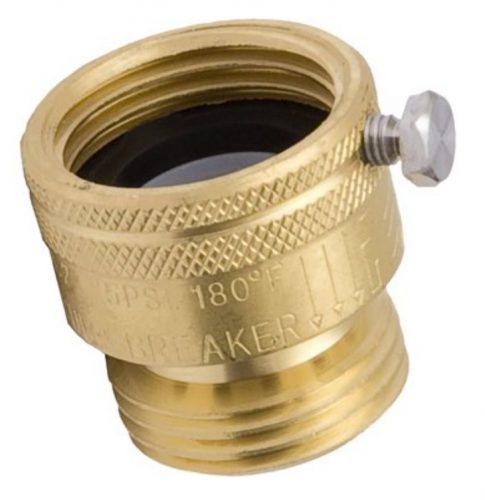
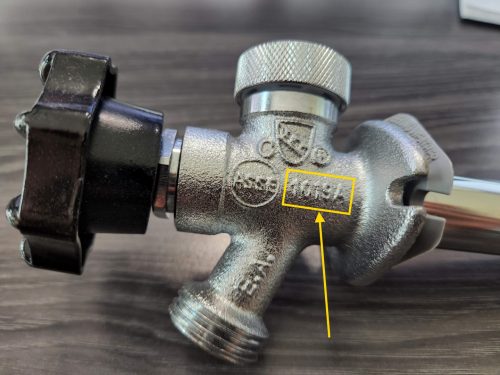
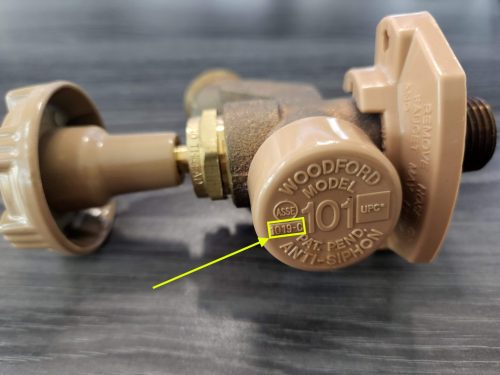
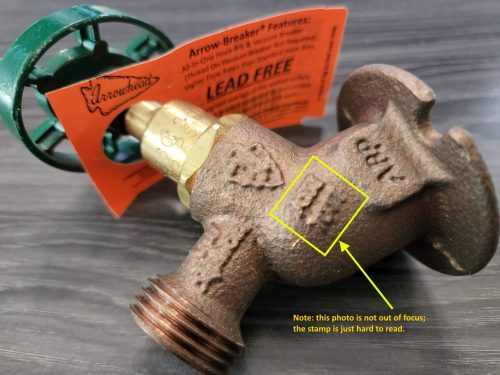
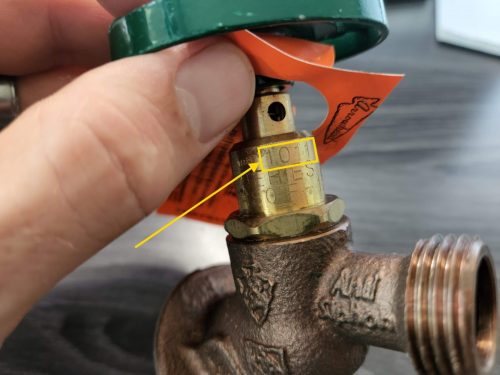
Craigslist verified accounts
March 26, 2009, 9:06 pm
I’m don’t comment often, but I do like your blog
Paul Sorensen
June 9, 2009, 2:42 pm
Thanks for the great info. I found your site while trying to figure out what that brass thingy was on our outdoor faucet. Your explanation is fantastic.
Reuben Saltzman
June 9, 2009, 3:18 pm
Thanks!
Truth-in-Housing Requirements | Reuben's Home Inspection Blog
November 15, 2009, 7:08 am
[…] Vacuum Breakers – aka backflow preventers. This is a device that can be purchased at most hardware stores, and should be screwed on to the end of any exterior sillcocks, or indoor faucets that could accept a garden hose thread (typically the laundry faucet). These are basically one-way valves that protect the city’s water supply from potential contamination. Note the set screw in the vacuum breaker pictured to the right – this set screw should be tightened down until broken off to make sure the vacuum breaker is permanently installed. […]
lisa
December 5, 2009, 12:06 am
Thank you for explaining why the city of warren,MI has a requirement for installing vacuum breakers on sillcocks and laundry tubs. I believe it would require a completely stupid, thoughtless person to actually contaminate their potable water the way you’ve described it (something I’m willing to bet one of the five totally incompetent building inspectors has managed to do) but as improbable as the set of circumstances are that would lead to this you’ve made it make sense to someone with a good understanding of plumbing systems who keept wondering why you would need a vacuum breaker attached to something that closes completely with a valve and has water pressure pushing against it.
A Missing Jumper Wire At The Water Meter | Reuben's Home Inspection Blog
January 26, 2010, 5:07 am
[…] Vacuum Breakers (backflow preventers) […]
Floor Drain Basics | Reuben's Home Inspection Blog
March 19, 2010, 11:28 am
[…] Floor Drain Basics […]
Carbon Monoxide Alarm Requirements For Minnesota | Reuben's Home Inspection Blog
July 9, 2010, 4:06 am
[…] Floor Drains […]
Toilet Repair - Fixing An Improper Air Gap On A Ballcock | Reuben's Home Inspection Blog
November 29, 2010, 10:56 am
[…] Vacuum Breakers (backflow preventers) […]
Smoke Detector Safety | Structure Tech Home Inspections
July 11, 2011, 7:50 pm
[…] Vacuum Breakers (backflow preventers) […]
Alex
September 27, 2022, 4:05 pm
So, in other words, a very likely scenario that could occur any time to anybody – NOT! |:^}
I know they have to be called out in an inspection, but I have never actually heard of a scenario where something bad happened to somebody’s house because of the lack of a VB.
Do you have first-hand knowledge of where such a contamination occurred due to lack of VB? Just curious.
Reuben Saltzman
September 27, 2022, 4:23 pm
Hi Alex, no first-hand knowledge of this particular type of backflow, but on the other hand, I don’t have first-hand about a lot of the safety issues we call out as home inspectors.
However, I did witness toilet tank water get siphoned into the drinking water of a home I was inspecting once. The water in the tank was black, and a big slug of that water came out of the tub spout as I was filling the bath tub. It happened right went I flushed the toilet.
Here’s a list of some historical backflow events: https://treeo.ufl.edu/backflow/epa-resources/backflow-case-histories/
But as you said, this is a very unlikely scenario.